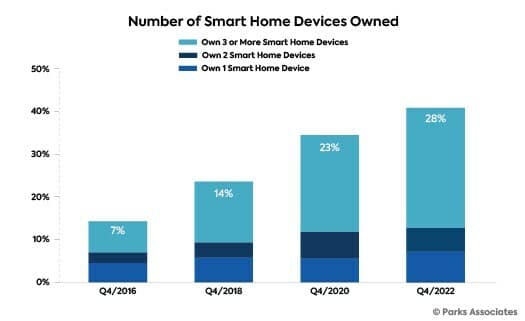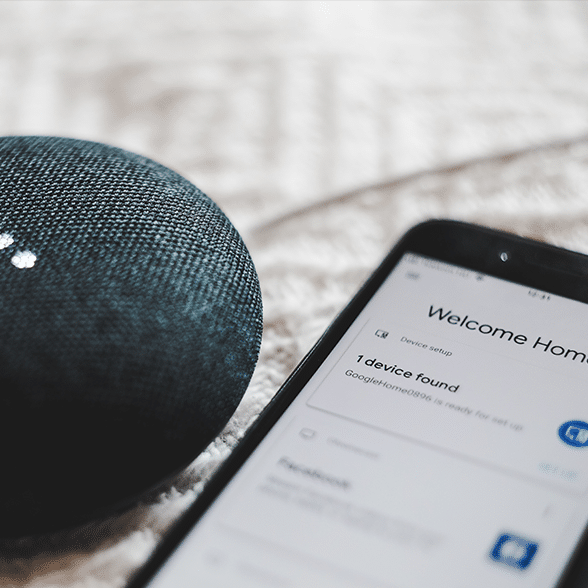The percentage of homes that own smart devices is growing, and the growth is in the segments that own one device, two devices or three or more devices, according to a report from Parks Associates.
Currently, 41% of homes have at least one smart device. That percentage is likely to rise if Parks’ assessment that the portion of U.S. households with fixed or mobile broadband connectivity will reach about 93% by 2024.
The firm found that in the fourth quarter of 2016, 7% of households with smart devices had three or more. That segment increased to 14% in the fourth quarter of 2018, 23% during the fourth quarter of 2020 and 28&% during the fourth quarter of last year.
“The smart home market is starting to reach a more mass-market consumer who is not necessarily an early adopter of technology. The strategies that attract early adopters may not be sufficient to reach new customers,” Jennifer Kent, the Vice President of Research, Parks Associates, said in a press release about the smart devices report. “There is enormous opportunity in serving new households with intelligent, affordable, and secure solutions that solve practical needs.”

The report suggests that standards will be the key as the mass market era evolves and mentions the emerging Matter standard by name.
Consumers are not quite there yet, however. “Curated, systems-based approaches – most notably through home security platforms and hub-based smart home systems — have been critical for providing a unified, seamless, smart home experience,” the report reads. “Still, most consumers buy point solutions for particular use cases. This widespread purchase behavior limits the opportunity for integration and whole-home experiences.”
The white paper, Next-Generation Smart Home: Building for the Future, was created by Parks Associates and The Connectivity Standards Alliance.
The explosion of connectivity options and device types and sophistication coupled with the COVID-19 pandemic greatly accelerated the density of smart devices in homes. There was a bit of a bounce back as the pandemic faded, however. Last August, Deloitte found that the number of smart home devices fell from 25 to 22 between 2021 and last year.



